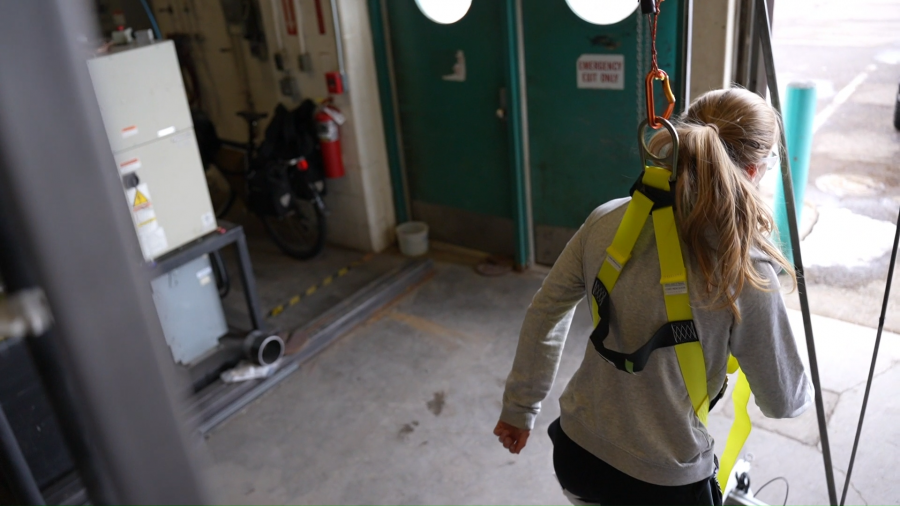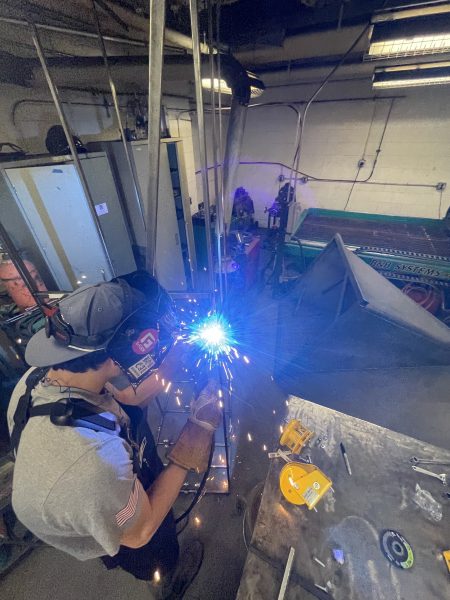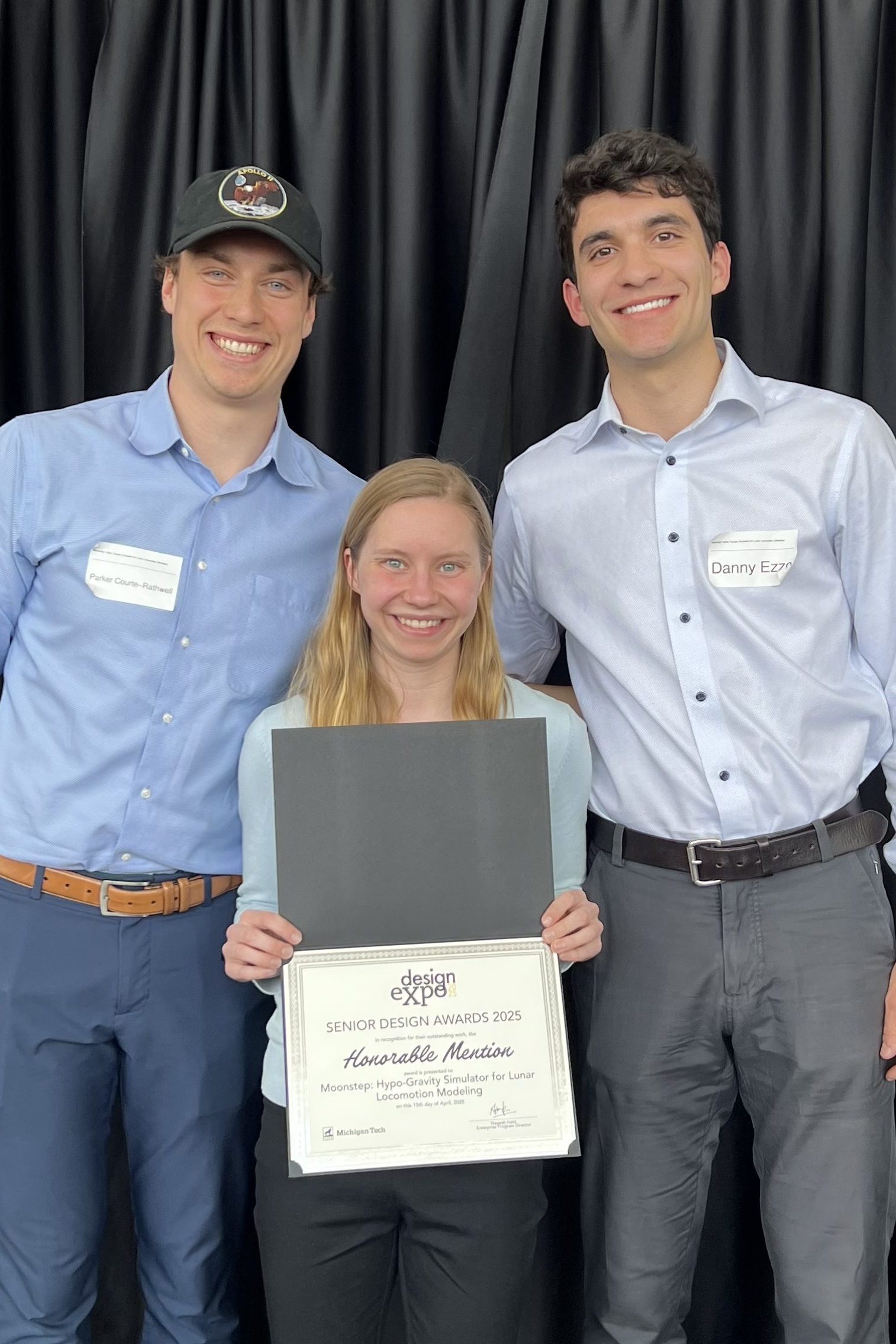
Hypogravity Simulator for Lunar Locomotion Modeling
Inside the EERC, the RoLAC lab is home to MoonStep: A hypogravity simulator that enables volunteers to experience ‘reduced gravity’. During the 2024-2025 academic year, Danny Ezzo, Ingrid Halverson, and Parker Courte-Rathwell worked on brainstorming and manufacturing a functional prototype. The undergraduate Senior Design team consisted of a Mechanical Engineering Technology student, a Robotics Engineering student and a Mechanical Engineering student. Together, they sought out to combine their engineering disciplines for a common design goal: alleviate 5/6th of the volunteer’s body weight while they walk, run or jump. More specifically, replicate the moon’s gravitational environment and observe the physical costs of walking on the Moon.

Fall 2024
The fall semester was primarily focused on selecting the manner in which the offloading force would be produced. Various research facilities across the world utilize springs or automated winches to lift the volunteer. MoonStep however, uses elastics, using a combination of 3 to 5 elastics of 4 different sizes depending on the volunteer’s weight. Although not unique to this Senior Design team, the use of elastics hasn’t been traditionally refined to the same extent as this project. Identifiable as non-linear systems, the team found that if the operational range fit within a small percentage of the total elongation of the elastic, the system would have only a small amount of force deviation produced by the elastics, rendering the system quasi-linear. The team believes that the linearity of the system is important in the replication of the hypo-gravity environment due to the consistency of gravitational force.
Spring 2025
The spring semester focused on manufacturing and resourcing the components that would make up the first prototype. Hours spent in the shop resulted in an 8.5 feet tall, 15 feet long and 2 feet wide steel structure. Simultaneously, work was conducted on a load cell and IMU, where their output would be communicated through ESP32 microcontroller boards. The first tests were exciting as Ingrid Halverson soared to consistent jumps between 2 to 3 feet in height with little to no effort. However, the team quickly found that the elastics weren’t performing as anticipated. The forces produced by the elastics were less linear than they needed to be. The team realized that the elastics were being constrained at each pulley. This resulted in force concentrations that reduced the amount of energy that was dispersed over the entirety of the elastic. This means the stretched length of the elastics was reduced, and the operational range became a much larger percentage of the total stretched range.
To work around this issue, the team uses the rotational energy of the first pulley in the system. A series of gears and belts constrain the movement of all the pulleys so that the movement of the first pulley is identical to the movement of all the pulleys it is attached to. This helps the elastic move around each pulley, resulting in less energy loss and a more linear system. The team was successful in creating a functional prototype for Senior Design expo, where they walked home with two awards: an Honorable Mention in the overall Senior Design competition and the Audience Choice award for Senior Design.

When different disciplines of engineering come together towards a common goal, everyone gets a chance to add their flair to the project. The past year has been very insightful and rewarding to work with two great friends of mine as they showed their assets in their respective fields.
Finally, the team would like to thank professors Tan Chen and Steven Elmer along with graduate student Anders Smitterberg for their support and guidance